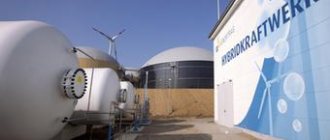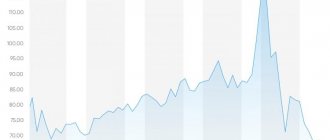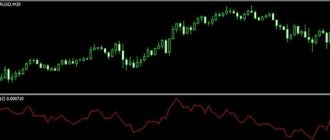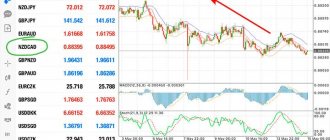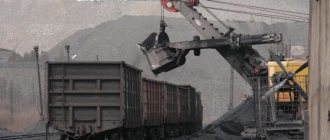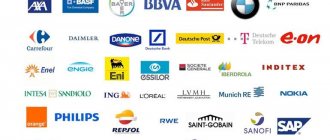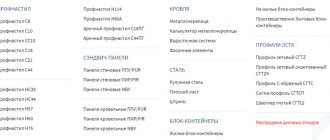Palladium price formation and bank forecasts
In 2021 and 2021, palladium began its rapid ascent into the ranks of investment-promising metals. In just 2021, the price of this metal has increased by $700, making it more expensive than gold. However, the palladium rate did not stop there - by the middle of the first quarter of 2021, the price had increased by 75%.
Interesting to know! Changing environmental requirements in Europe and other countries have increased the need for palladium, because it is used in Catholic filters that neutralize vehicle emissions. The simultaneous decrease in metal production in South Africa only fueled price increases.
For the Russian economy, the jump in exchange rate is a good thing - the main supplier of palladium is , which allows for a more active replenishment of the Russian budget. On the other hand, it is easy to predict what will happen to the cost of these autocatalysts - they will increase in price. However, Russian and foreign banks are confident in the further increase in the value of the metal, although most financial institutions believe that the rate will no longer increase at such a significant pace.
VTB Capital specialists believe that as long as there is a shortage of metal, its value will continue to rise. At the moment, the shortage of metal is quite pronounced - there is already a need for almost 2 million ounces of palladium. However, the bank’s analysts also remember about the Arctic Palladium project from Norilsk Nickel. If the platinum group metals of this project begin to be extracted more efficiently and quickly, then the price increase will stop a little. However, this situation is unlikely to happen in 2021, which promises further growth for the palladium rate. At the same time, price per ounce forecasts for 2021 from different financial organizations have marked differences:
- BofA - $2625.
- ABN Amro Bank - $1612.
- "VTB Capital" - $2128.
- LBMA 2021 Precious metals - $2116.
- Bank of America Merrill Lynch—$1987.
Not all people need to know the principle of price formation and the opinion of banks. Some investors are simply interested in how much the metal will be worth after a certain amount of time. At the same time, without knowing the factors influencing the price of palladium, and without taking into account analytical arguments, it is difficult to invest in anything.
What kind of metal is Palladium and why is it so expensive?
Discovered in 1803 by William Wollaston by dissolving platinum in Aqua regia and then neutralizing the acid with NaOH, the metal palladium is now very much in demand.
First of all, because it is used in many industries and in each of them a severe shortage is constantly recorded. Today, the main consumers of palladium are: - jewelry houses, - coin houses, - oil companies, - medical companies, the main area of which is the treatment of oncological diseases.
The largest deposits of palladium are, of course, located in Russia (the city of Norilsk), as well as in countries such as Africa, the USA, Canada, and Australia. But production volumes there are several times less than in Russia. For example, in 2007, out of the total palladium supplies (267 tons), Russia accounted for 141 tons, while the United States and Canada in total were able to scrape together only 33. That is why we can afford to go to a bakery in slippers. on the way to Sberbank and make an investment in palladium. But when will this investment pay off and what does the whole process look like?
Opinion of third party analysts and companies
For any investor, the current exchange rate is as important as the price forecast. However, in the long term, not all persons purchasing any metal are able to assess even approximate prospects. This applies to beginners who decide to try to invest money somewhere on their own without outside help.
Attention! Despite the rosy forecasts of experts and the actual shortage of metal, a certain drop in demand can be expected in 2021 with a corresponding drop in prices. Due to the pandemic that broke out in the spring of 2021, the economy of the whole world literally collapsed, fewer cars began to be bought, therefore, not so much palladium will be consumed for filters.
On the other hand, 2021 also saw a contraction in the automobile market. However, due to new environmental standards, the decrease in car sales did not affect the amount of metal purchased, because diesel engines have lost out to gasoline engines, namely, the latter use palladium in filters that neutralize emissions.
Johnson Matthey, one of the main distributors of platinum and other related metals, noted that this is the beginning of growth, because In the future, we should expect additional tightening of environmental requirements for emissions produced by vehicles. This could lead to an increase in the need for palladium due to redesign of exhaust filters, even with a decrease in demand for cars.
Analytical expert of the Mining Technology blog D. Casey believes that the high cost of palladium, caused by a shortage of supply, is only good for current sellers and miners. As an investment instrument, this metal is dangerous - the main demand is only in the automotive industry; finding an adequate analogue will lead to a sharp drop in palladium prices.
Is palladium worth buying?
In February of this year, palladium prices in London exceeded $2,800/ounce due to a significant shortage of metal for spot supplies. Many investors have been following the impressive trend as they search for good entry points into the market. Any downward price corrections were used for buying, which warmed up the market even more. At the end of February, palladium prices reached their peak, and three weeks later they sharply dropped to $1,300/ounce under the influence of news from China about the development of coronavirus infection. Since then, the market has recovered to $1900/oz and is not yet willing to rise further, and investors often ask the question of whether palladium is worth buying...
The development of COVID-19 has dealt a significant blow to the palladium market, both from the consumption and supply sides. According to UBS bank, so far 10% of the world's palladium supply remains closed and 29% is being restored. Weak demand so far compensates for the lack of supply - it is estimated that 80% of palladium consumption in the automotive industry was affected by the introduction of quarantine measures.
A sharp drop in car production and sales in the world, and especially in China and the USA, has reduced demand for the metal. The delay in introducing new vehicle emission standards also has a negative impact on demand. In China, the introduction of the new China 6a standard, previously scheduled for early July 2021, was postponed by 6 months until January 1, 2021. The introduction of new standards in India and the USA is likely to be delayed.
If you look at the palladium chart from the technical side, you can see that the growing trend since February can be considered broken. Prices are recovering after significant corrections, but the market can no longer go above the historical high. This suggests that there is no longer an acute supply shortage in the palladium spot market.
At the same time, metal imports into China remain stable, and the Chinese automobile market has begun to recover. Retail sales of passenger vehicles in China rose 1.9% year-on-year to 1.64 million units in May, according to CPCA data. Palladium imports to China in April amounted to 5.02 tons versus 1.5 tons in April 2021 and 3.25 tons in March 2020. Palladium supplies to China from Russia in April increased 4 times y/y, but remained at 94 % lower than March 2021. Hong Kong's net palladium imports in April were 2.38 tonnes, up from 0.17 tonnes in March, but April imports remained 50.4% lower than a year ago.
In addition, in April, Switzerland became a net exporter of palladium for the first time in the last three months - export volumes were 3.3 times higher than last year. Palladium supplies to Switzerland from Russia increased 3 times YoY, but remained 46% lower than in March 2020.
Despite the recovery in metal flows to China, the palladium market is showing weakness. The decline in car sales around the world is pushing the market towards equilibrium or even a surplus. This is what the market leader is worried about: Norilsk Nickel gave an updated assessment of the palladium market during a recent industry conference.
According to Norilsk Nickel, the palladium market will be balanced this year after several years of shortages, but a surplus is not expected until 2021. Despite the pandemic, there is no surplus of palladium. The normalization of demand will depend on the pace of recovery in the automotive industry, where palladium consumption is “disappointing.” At the same time, in May, according to Norilsk Nickel, demand for palladium increased. Palladium consumption in 2021 will be 9.2 million ounces (-16% YoY), and global auto sales will decline by 22% YoY to 70 million units.
In addition to the virus factor, the market is under pressure from excess supply, since the quarantine was not actually complete, and most manufacturers continued to operate at 50% capacity. The decline in demand will be partially offset by problems with the supply of platinum group metals from South Africa caused by force majeure at Amplats, problems with energy supplier Eskom and quarantine shutdowns in that country. Global supplies are estimated at 9.3 million ounces (-12% YoY).
Given the lack of transparency around palladium production around the world and ongoing uncertainty regarding economic recovery, it is extremely difficult to accurately assess the market's prospects. Investment demand for palladium has been relatively weak recently, with holdings in palladium ETFs down about 9% in the second quarter compared to the first quarter of 2021, which can be attributed to challenging market conditions and limited liquidity.
The consensus forecast for the average annual price of palladium in 2021 is $2,100/ounce, in 2021 - $2,150/ounce. It is believed that prices will recover until the end of 2021 and in 2021. According to the Otkritie-broker calculation model, the cost of palladium by the end of 2020 may be close to $2000/ounce, and in 2021 it will be $2100–2200/ounce. However, the risks of the price moving below the strong support level of $1800/ounce are still high.
Summary indicators of exchange rate changes by month
Beginners and experienced investors are interested not just in the price of the metal at the end of the year, but in the price dynamics over several months. Such information is best studied using tabular values. It is important to remember that the table shows only one of many forecasts, and not some guaranteed price for each month. Moreover, there are no specific values for the cost of the metal - only monthly percentage changes in the exchange rate are indicated. It is also worth paying attention to the fact that the dates are divided into 2 groups: from the 1st to the 15th and from the 16th to the end of the month.
| Month | Changes at the beginning of the month | Price fluctuations the end of the period |
| January | -2,38 | -1,19 |
| February | -3,57 | +0,85 |
| March | +2,04 | -2,72 |
| April | +0,68 | -2,55 |
| May | +2,04 | -4,93 |
| June | -2,04 | +0,51 |
| July | -4,59 | +1,53 |
| August | +2,55 | -4,76 |
| September | +0,85 | +2,72 |
| October | +1,36 | -0,85 |
| November | +3,74 | +3,23 |
| December | +1,02 | +2,55 |
It is important to remember that large investments in palladium already have obvious risks. If, due to a shortage of this metal, its cost continues to rise rapidly, then manufacturers will be forced to replace palladium in autocatalysts with platinum, which can perform similar functions. Consequently, in such a situation, the demand for it will fall, which will lead to a rapid decline in prices. A negative exchange rate chart can demonstrate both the discovery of a new deposit and an increase in the efficiency of production at old mines. At best, this can curb price increases; at worst, it can bring down the cost per ounce by several hundred dollars.
The palladium price forecast for 2021 separately by month will be more accurate than for this entire period. Investors should always remember that long-term forecasts always have the risk of being unreliable due to the large number of influencing factors multiplied over many months and days. At the same time, the general trend is usually visible even in a long-term forecast; all that remains is to monitor current changes in the value of the metal.
Chart of price changes for Palladium in Russia over the past 5 years
Before answering the question whether it is profitable to invest in palladium in 2019, you must first know exactly what type of investment it will be. That is, for how long do you want to receive dividends and what kind. It is hardly necessary and reasonable to wait for an explosive growth in demand for this metal within a week or two, since the main indicators of growth are the reports of the Gokhran of Russia on the production and delivery of metal (this is how analysts find out how much metal will be “thrown” onto the market, which affects its price), as well as reports from other countries. engaged in palladium mining.
And Sberbank eliminates the lion's share of your profit, inflating the difference between the purchase and sale of this metal to 250 rubles per 1 gram. For example, today, January 24, 2021, the purchase rate by Sberbank for 1 gram of palladium is 1352 rubles, while the selling rate is only 1561. Not bad, dear money-seekers, not bad. Thus, we just want to summarize - even if you have a large amount of money on hand to invest, it will be difficult to quickly make money buying and selling palladium at Sberbank.

